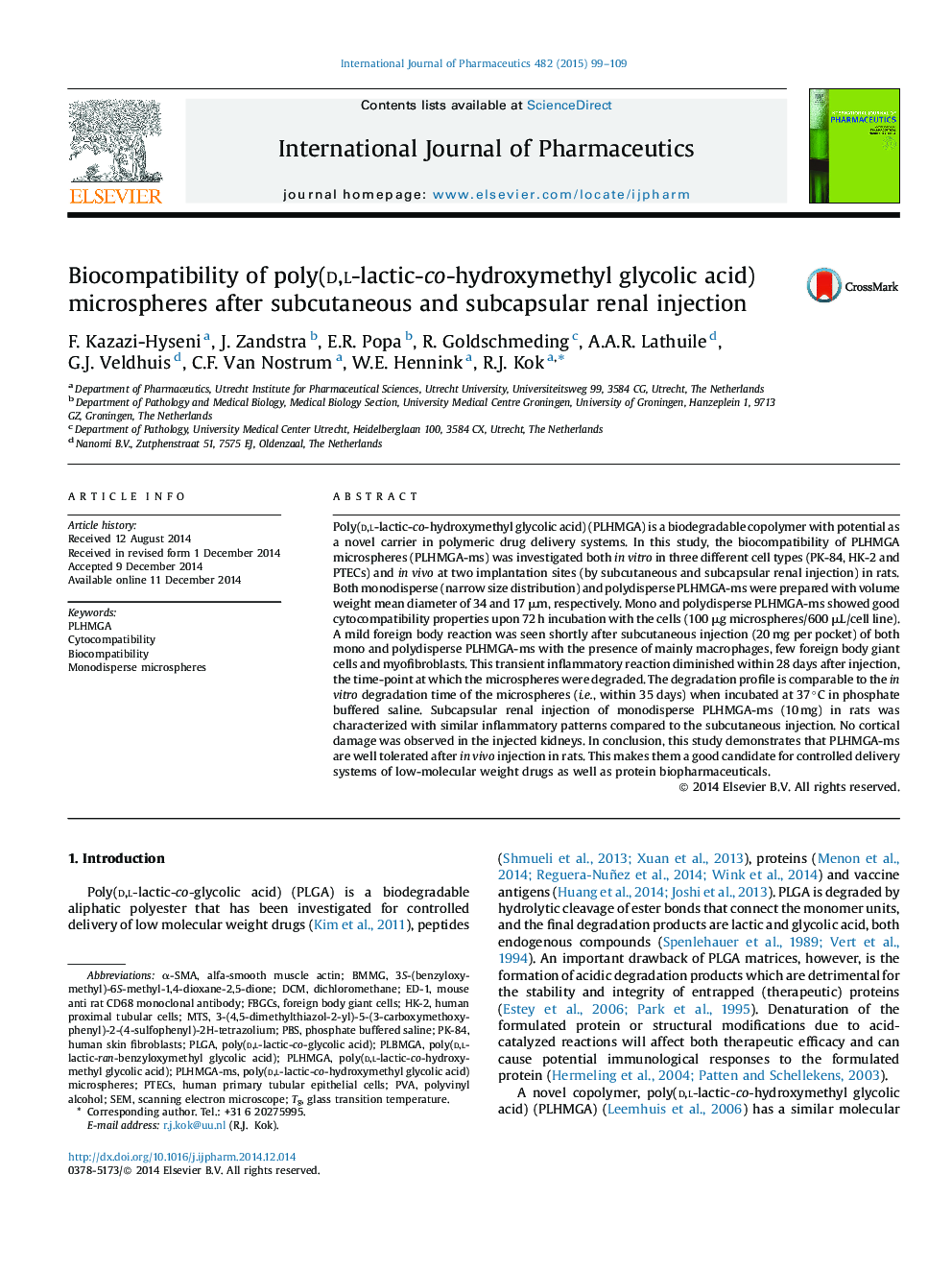| کد مقاله | کد نشریه | سال انتشار | مقاله انگلیسی | نسخه تمام متن |
|---|---|---|---|---|
| 2501422 | 1557342 | 2015 | 11 صفحه PDF | دانلود رایگان |

Poly(d,l-lactic-co-hydroxymethyl glycolic acid) (PLHMGA) is a biodegradable copolymer with potential as a novel carrier in polymeric drug delivery systems. In this study, the biocompatibility of PLHMGA microspheres (PLHMGA-ms) was investigated both in vitro in three different cell types (PK-84, HK-2 and PTECs) and in vivo at two implantation sites (by subcutaneous and subcapsular renal injection) in rats. Both monodisperse (narrow size distribution) and polydisperse PLHMGA-ms were prepared with volume weight mean diameter of 34 and 17 μm, respectively. Mono and polydisperse PLHMGA-ms showed good cytocompatibility properties upon 72 h incubation with the cells (100 μg microspheres/600 μL/cell line). A mild foreign body reaction was seen shortly after subcutaneous injection (20 mg per pocket) of both mono and polydisperse PLHMGA-ms with the presence of mainly macrophages, few foreign body giant cells and myofibroblasts. This transient inflammatory reaction diminished within 28 days after injection, the time-point at which the microspheres were degraded. The degradation profile is comparable to the in vitro degradation time of the microspheres (i.e., within 35 days) when incubated at 37 °C in phosphate buffered saline. Subcapsular renal injection of monodisperse PLHMGA-ms (10 mg) in rats was characterized with similar inflammatory patterns compared to the subcutaneous injection. No cortical damage was observed in the injected kidneys. In conclusion, this study demonstrates that PLHMGA-ms are well tolerated after in vivo injection in rats. This makes them a good candidate for controlled delivery systems of low-molecular weight drugs as well as protein biopharmaceuticals.
Figure optionsDownload high-quality image (216 K)Download as PowerPoint slide
Journal: International Journal of Pharmaceutics - Volume 482, Issues 1–2, 30 March 2015, Pages 99–109